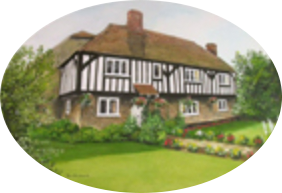Victorian Silver Castle-Top Vinaigrette 'Clifton Suspension Bridge'
NATHANIEL MILLS, Birmingham 1846
Photo 1 of 13
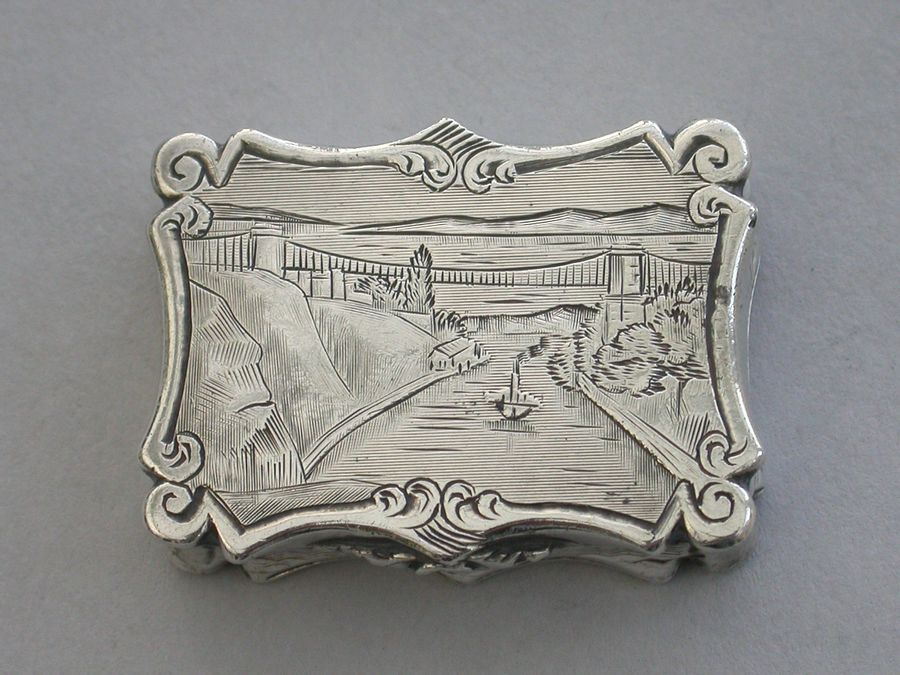
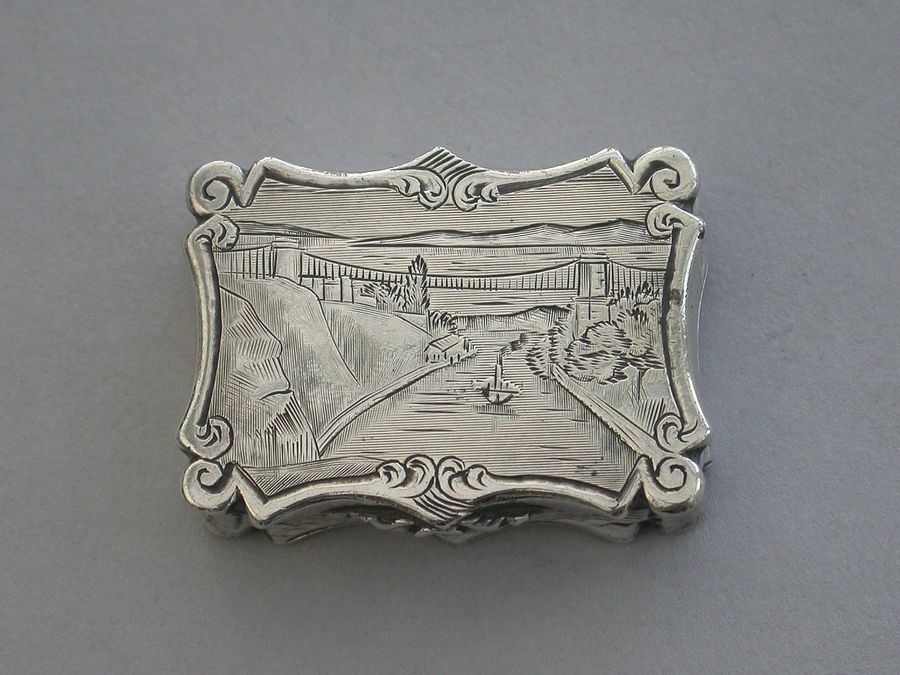
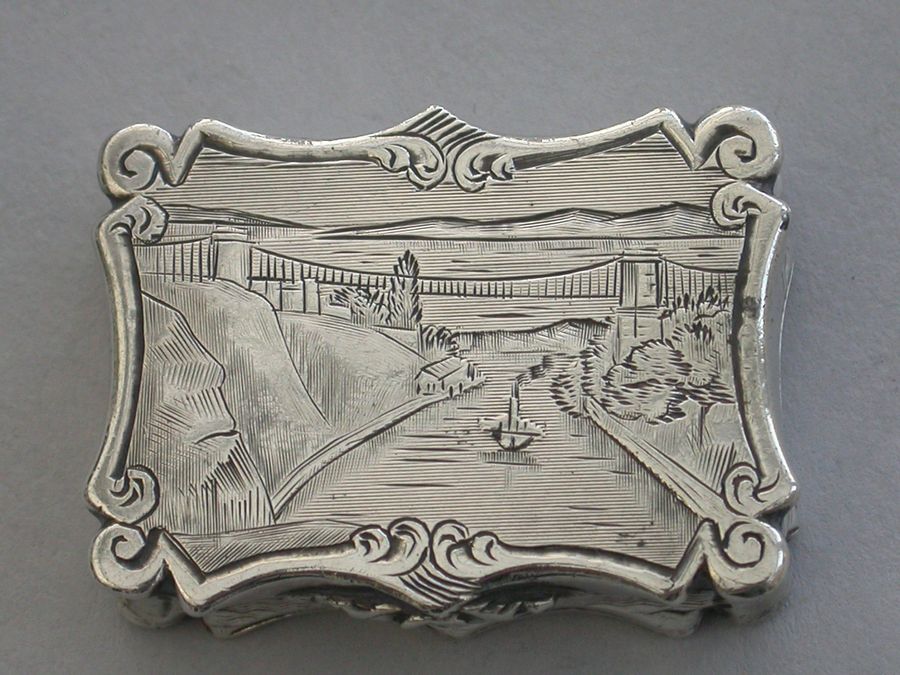


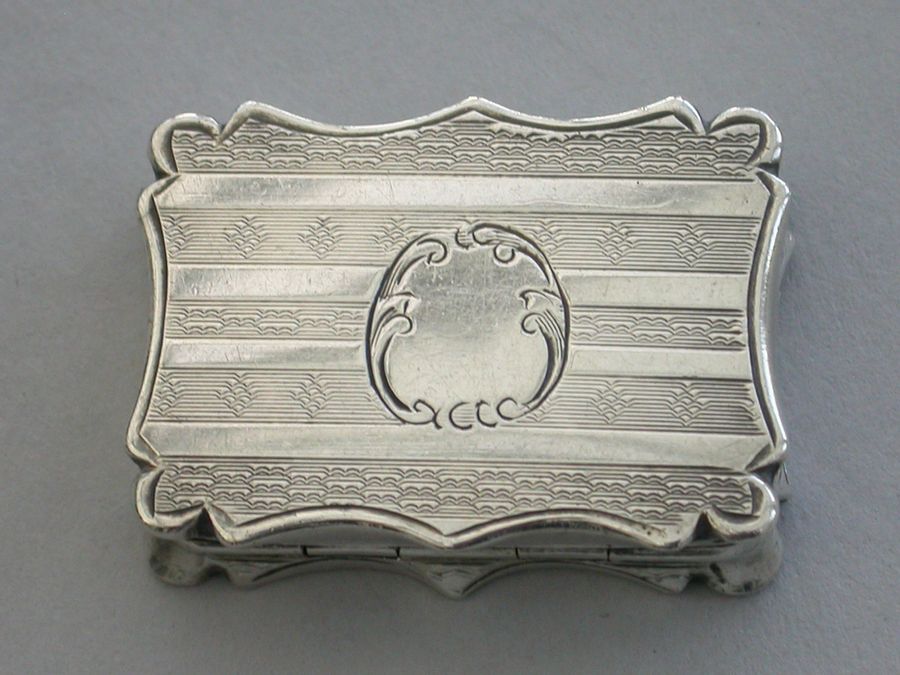
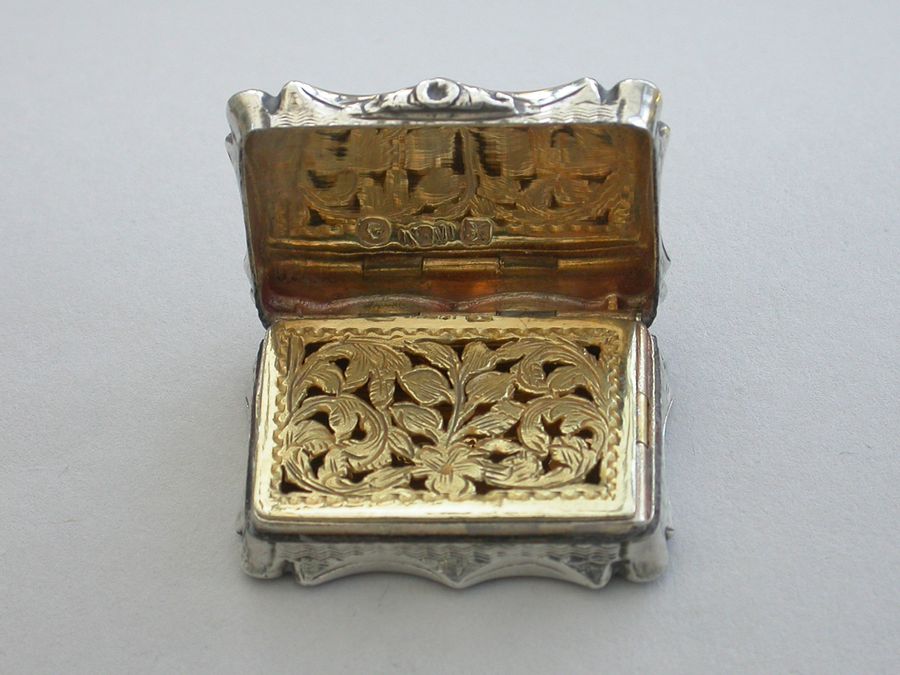
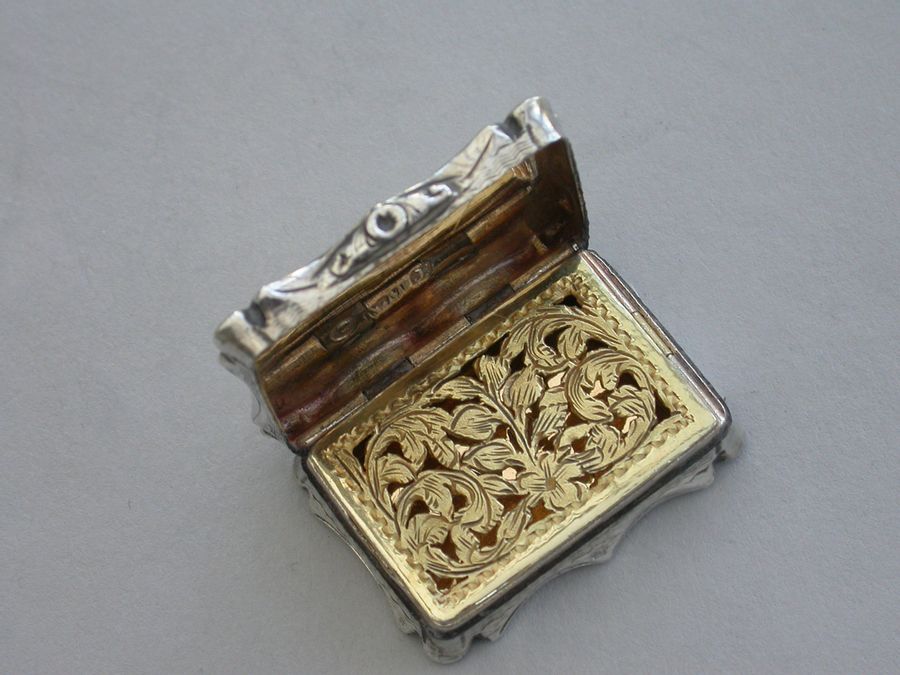
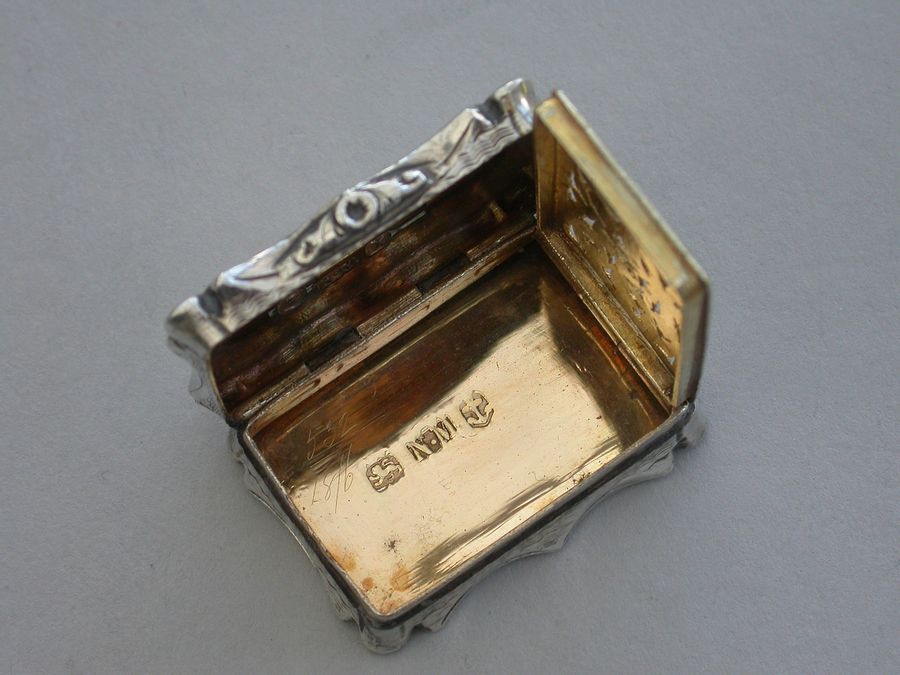
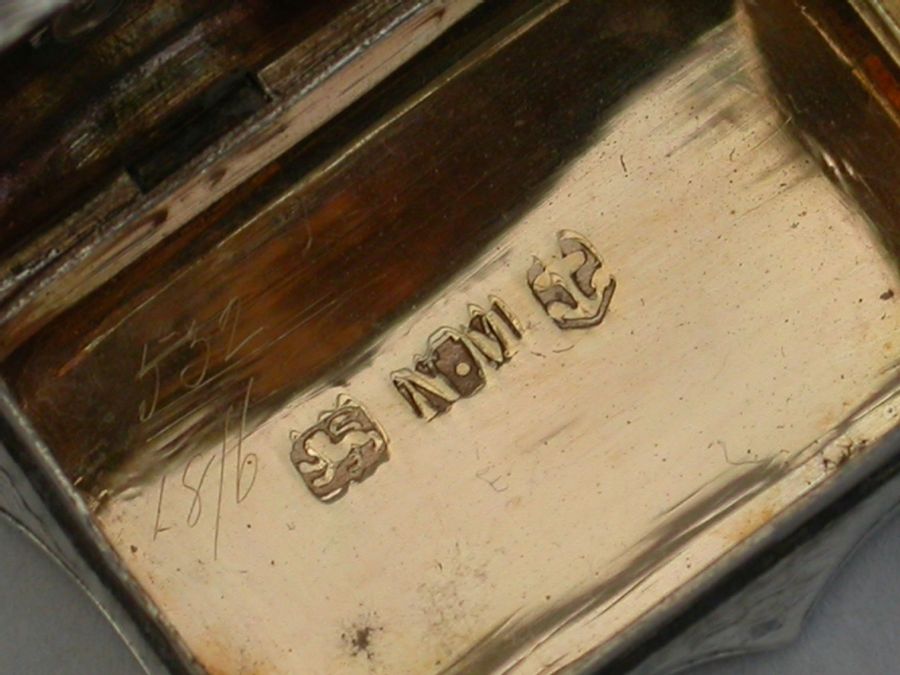

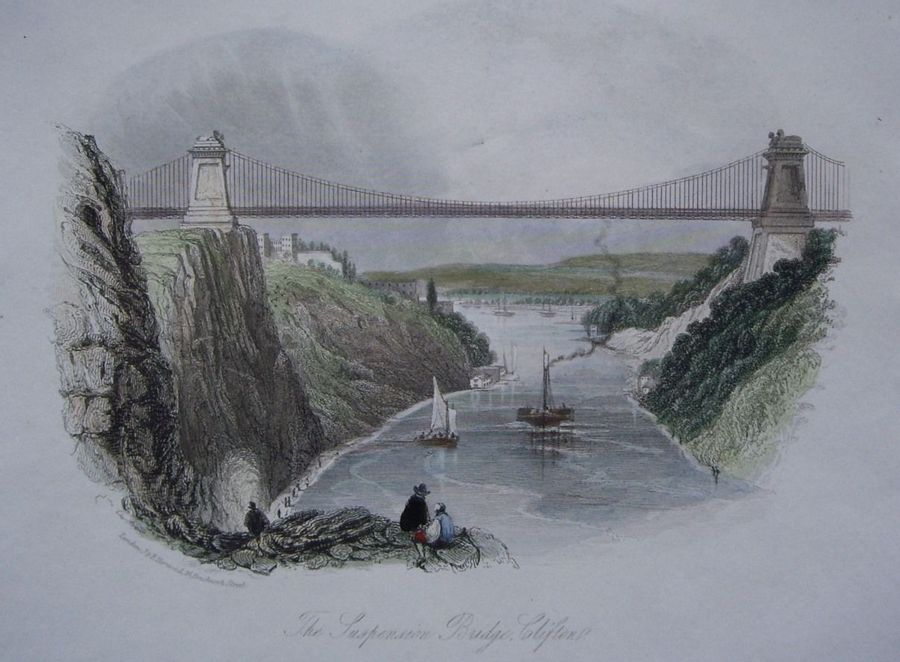
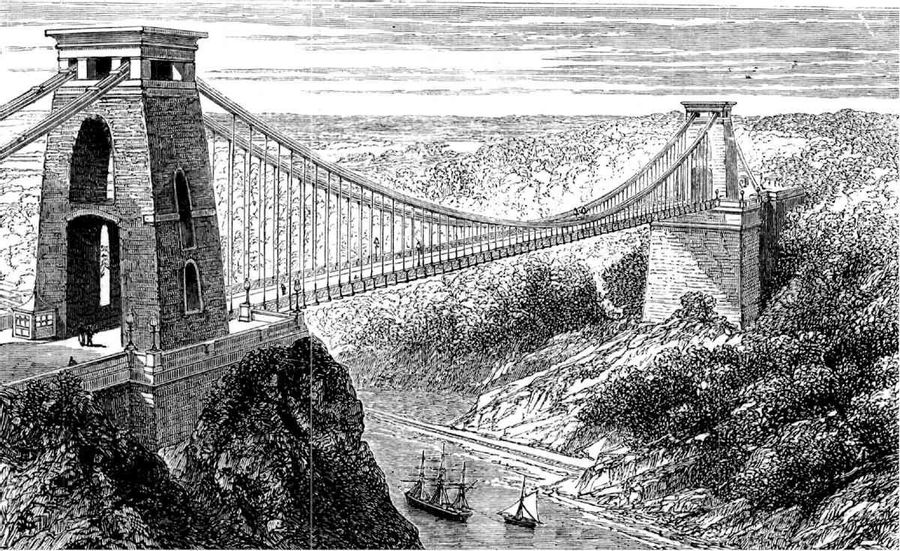
An extremely rare Victorian silver Vinaigrette of shaped rectangular form, the base and sides with bands of engine turned decoration and a vacant shaped cartouche. The lid engraved with a scene depicting Clifton Suspension Bridge. The silver gilt interior with hinged foliate scroll pierced grille.
By Nathaniel Mills, Birmingham, 1846
Sold - £3,950.00
Condition
In good condition with no damage or repair
Dimensions
H
8 mm
(0.31 inches)
W
32 mm
(1.26 inches)
D
24 mm
(0.94 inches)
Weight
13.00 Grams
(0.42 troy ounces)
Country
England
Stock Code
TRS280917A
Medium
Silver
Literature
The Clifton Suspension Bridge is a suspension bridge spanning the Avon Gorge and the River Avon, linking Clifton in Bristol to Leigh Woods in North Somerset. Since opening in 1864, it has been a toll bridge; the income from which provides funds for its maintenance. The bridge is built to a design by William Henry Barlow and John Hawkshaw, based on an earlier design by Isambard Kingdom Brunel, and contributed to by Sarah Guppy. It is a grade I listed building and forms part of the B3129 road.
The idea of building a bridge across the Avon Gorge originated in 1753. Original plans were for a stone bridge and later iterations were for a wrought iron structure. In 1831, an attempt to build Brunel's design was halted by the Bristol riots, and the revised version of his designs was built after his death and completed in 1864.
A competition was held to find a design for the bridge with a prize of 100 guineas. Entries were received from 22 designers, including Samuel Brown, James Meadows Rendel, William Tierney Clark and William Hazledine. Several were for stone bridges and had estimated costs of between £30,000 and £93,000. Brunel submitted four entries. The judging committee rejected 17 of the 22 plans submitted, on the grounds of appearance or cost. They then called in Scottish civil engineer Thomas Telford to make a final selection from the five remaining entries. Telford rejected all the remaining designs, arguing that 577 feet (176 m) was the maximum possible span. Telford was then asked to produce a design himself, which he did, proposing a 110-foot-wide (34 m) suspension bridge, supported on tall Gothic towers, costing £52,000.
An Act of Parliament was passed to allow a wrought iron suspension bridge to be built instead of stone, and tolls levied to recoup the cost. A company was formed and funds raised during the first few months of 1830, but the money raised was not sufficient for the construction. Despite this, the act received Royal Assent in May 1830. Brunel produced a new proposal costing £10,000 less than Telford's design and gained support for it in the local press. James Meadows Rendel, William Armstrong and William Hill also submitted new, cheaper proposals, complaining that the committee had not set a budget. In 1831 a second competition was held, with new judges including Davies Gilbert and John Seaward examining the engineering qualities of the proposals. Thirteen designs were submitted; Telford's was the only one in which the chains achieved the weight per square inch required by the judges but it was rejected as being too expensive. The winner was declared to be a design by Smith and Hawkes of the Eagle Foundry in Birmingham. Brunel had a personal meeting with Gilbert and persuaded him to change the decision. The committee then declared Brunel the winner and he was awarded a contract as project engineer. The winning design was for a suspension bridge with fashionably Egyptian-influenced towers. In 2010, newly discovered letters and documents revealed that, in producing his design, Brunel had taken advice from his father, Sir Marc Isambard Brunel. The elder Brunel had recommended including a central support for the bridge, as he did not believe a single-span bridge of such length could be constructed. His son chose to ignore his advice.
A ceremony to mark the start of the construction works was held on 21 June 1831. A few days later work was halted by the Bristol riots, which took place after the House of Lords rejected the second Reform Bill, which aimed to eliminate some of the rotten boroughs and give parliamentary seats to Britain's fast growing industrial towns such as Bristol. Five hundred to six hundred young men were involved in the riots and Brunel was sworn in as a special constable. The riots severely dented commercial confidence in Bristol; subscriptions to the bridge company ceased, and along with it, further construction of the bridge.
After the passing of the Act for the Great Western Railway reestablished financial confidence, work resumed in 1836, but subsequent investment proved woefully inadequate. Despite the main contractors going bankrupt in 1837, the towers were built in unfinished stone. To enable the transfer of materials, a 1,000-foot-long (300 m) iron bar, which was 1.25 inches (32 mm) in diameter, had been drawn by capstan across the gorge. A contract was placed with Dowlais Ironworks to supply 600 tons of bar iron, which was to be transported to the Copperhouse foundry to be forged into bar chains. By 1843 funds were exhausted and another £30,000 was needed. As the work had exceeded the time limit stated in the Act, all work stopped. Brunel suggested building a deep water pier at Portbury, which would make the bridge an essential road link, but funds for this scheme were not forthcoming. In 1851, the ironwork was sold and used to build the Brunel-designed Royal Albert Bridge on the railway between Plymouth and Saltash. The towers remained and during the 1850s intrepid passengers could cross the gorge in a basket slung from the iron bar.
Brunel died in 1859, without seeing the completion of the bridge. His colleagues in the Institution of Civil Engineers felt that completion of the Bridge would be a fitting memorial, and started to raise new funds. In 1860, Brunel's Hungerford suspension bridge over the Thames in London was demolished to make way for a new railway bridge to Charing Cross railway station. Its chains were purchased for use at Clifton.
A revised design was made by William Henry Barlow and Sir John Hawkshaw, with a wider, higher and sturdier deck than Brunel intended, with triple chains instead of double.
It has been argued that the size and technology of these revisions was so great that the credit for its design should go to Barlow and Hawkshaw. The towers remained in rough stone, rather than being finished in the Egyptian style. Work on the bridge was restarted in 1862. The strength of the structure was tested by spreading 500 tons of stone over the bridge. This caused it to sag by 7 inches (180 mm), but within the expected tolerances. The construction work was completed in 1864–111 years after a bridge at the site was first planned.
